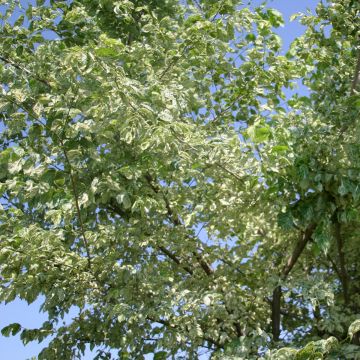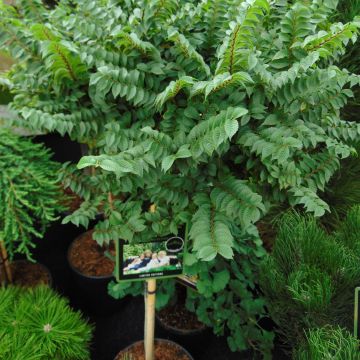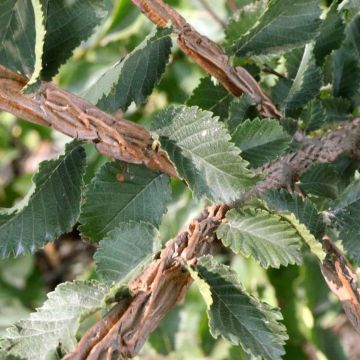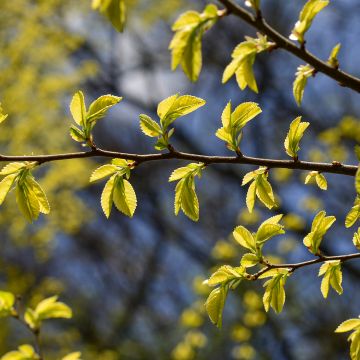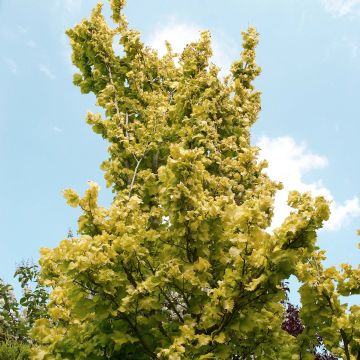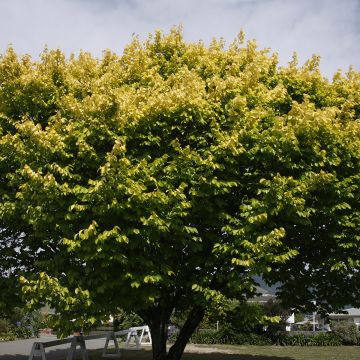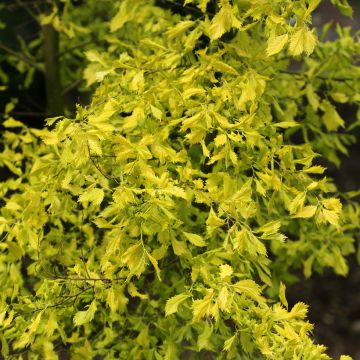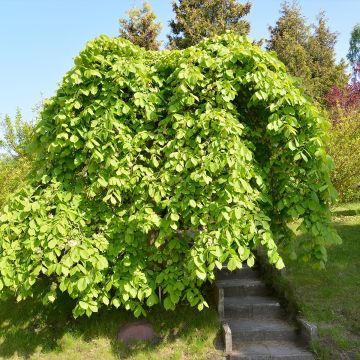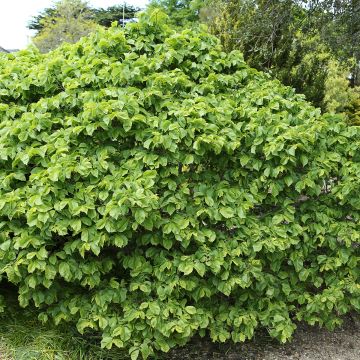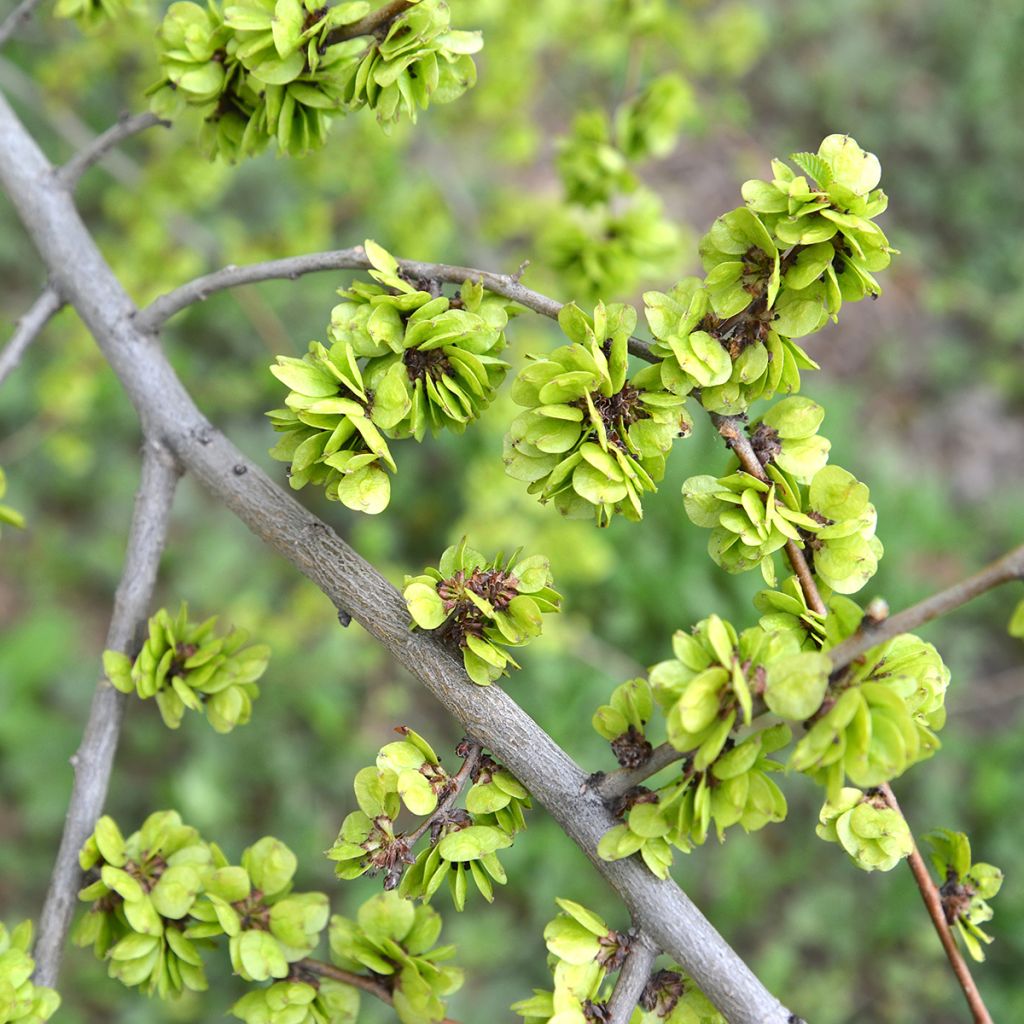

Ulmus pumila - Orme de Sibérie
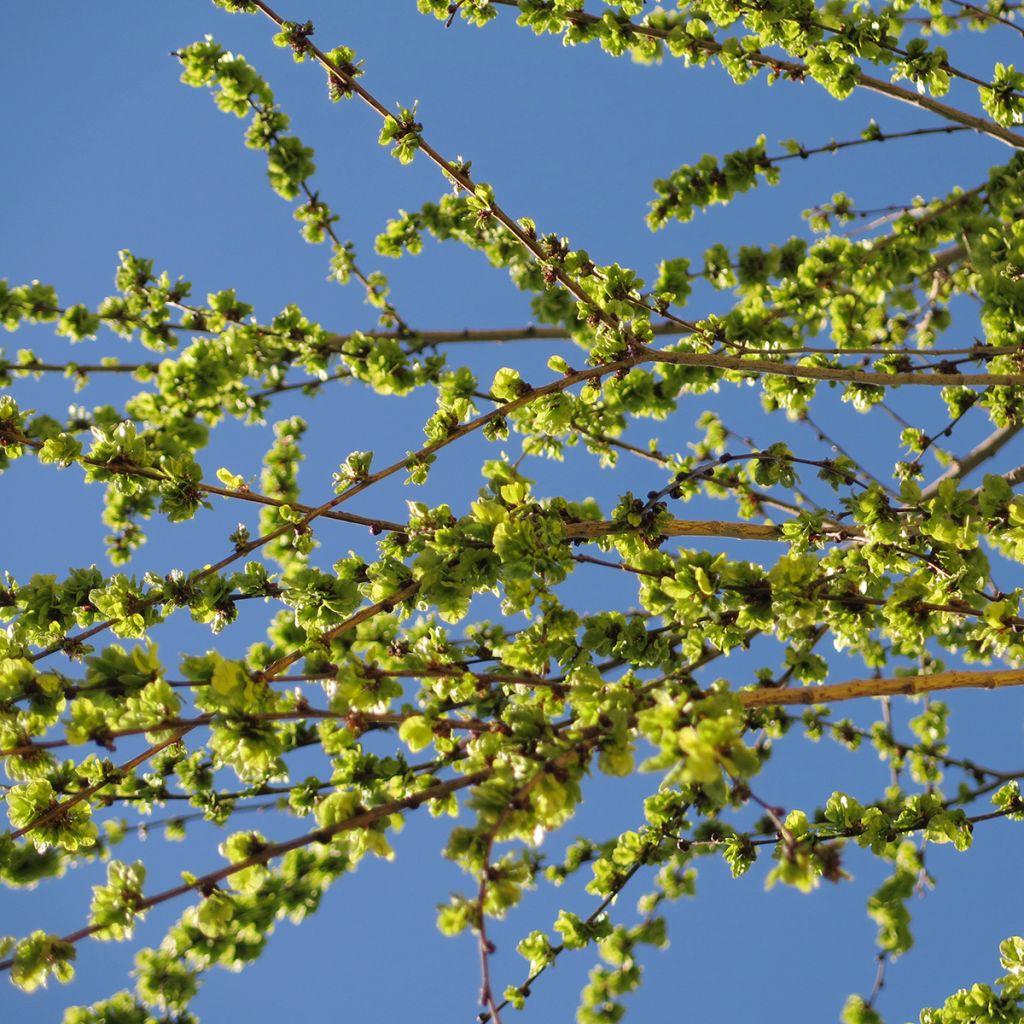

Ulmus pumila - Orme de Sibérie
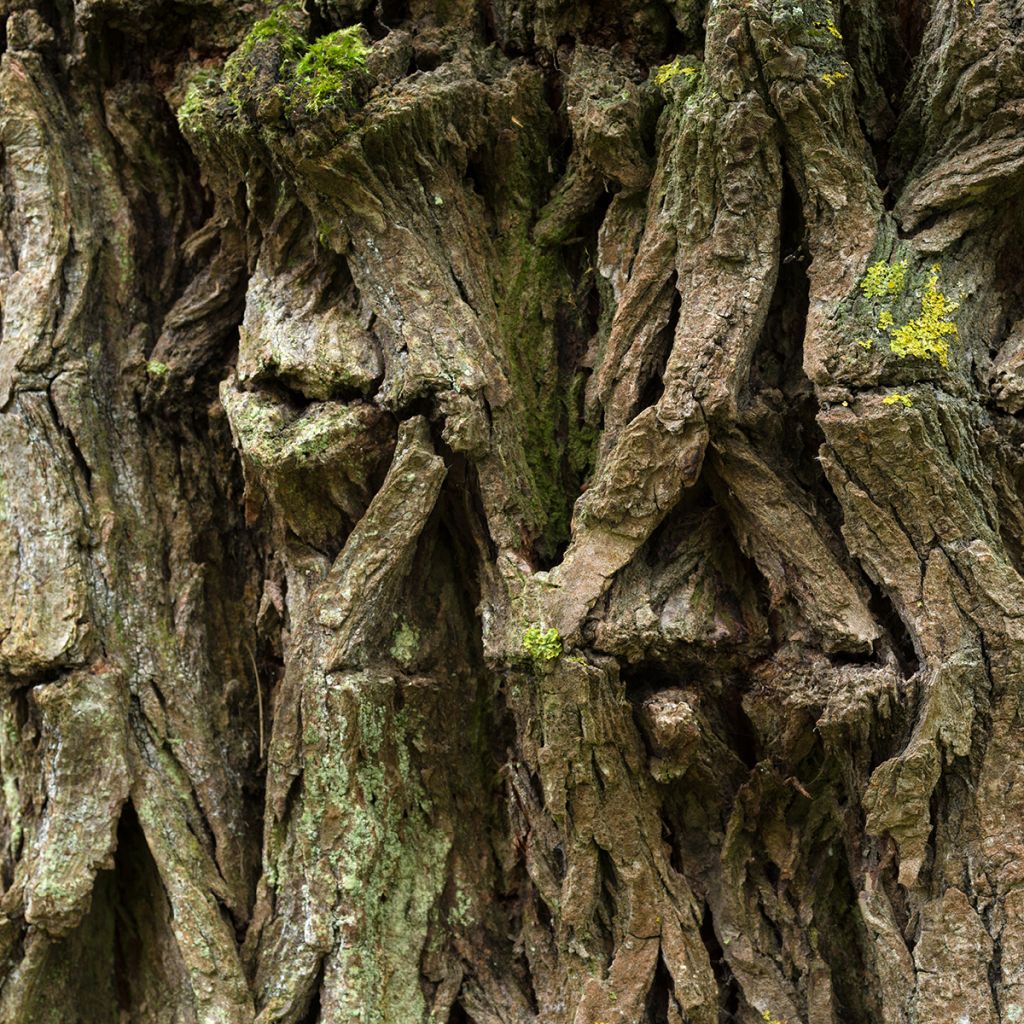

Ulmus pumila - Orme de Sibérie
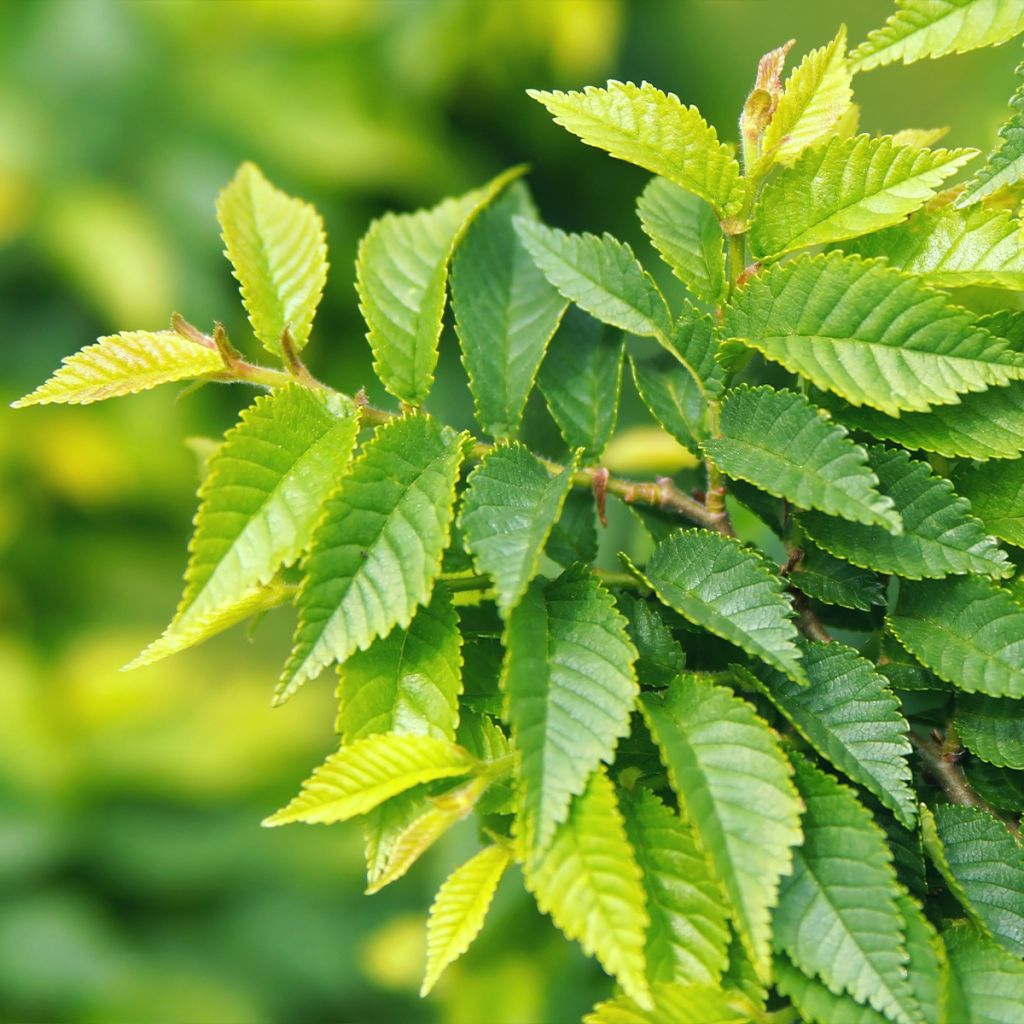

Ulmus pumila - Orme de Sibérie
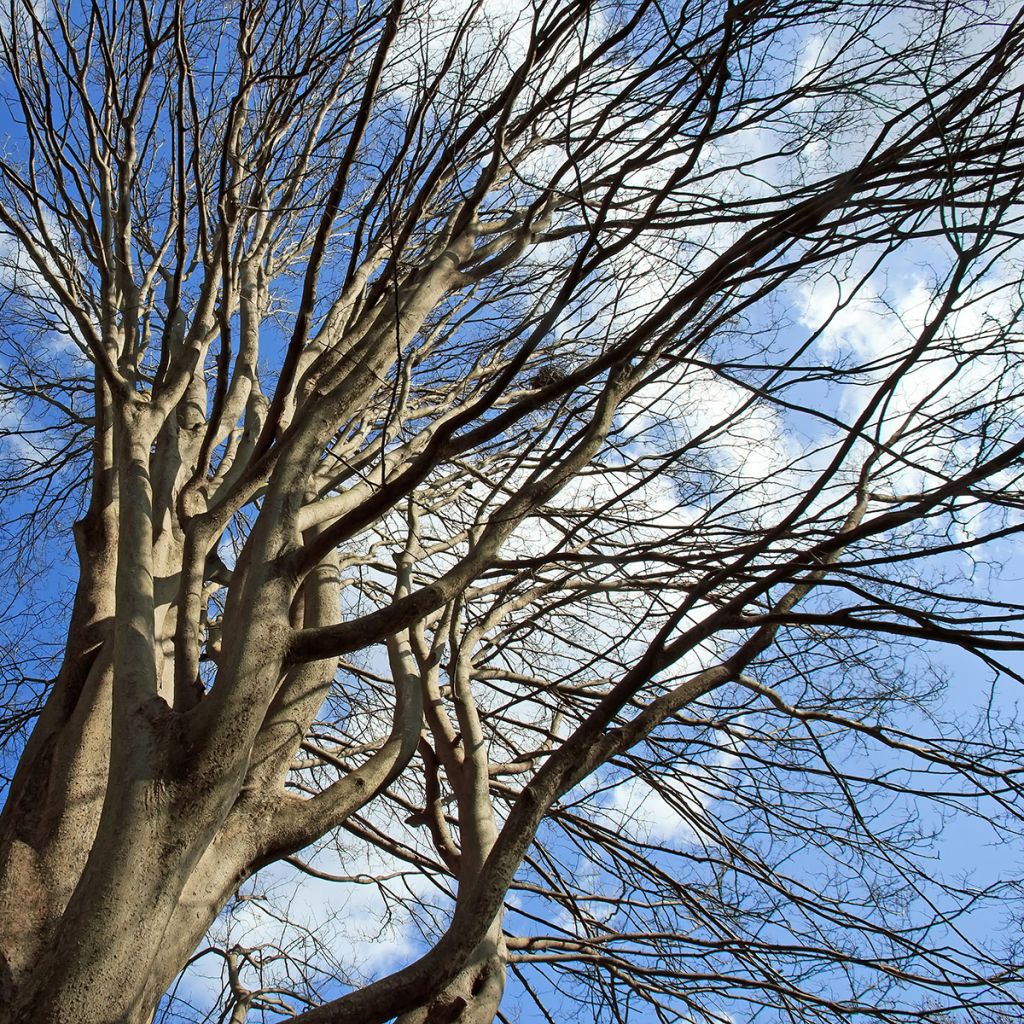

Ulmus pumila - Orme de Sibérie
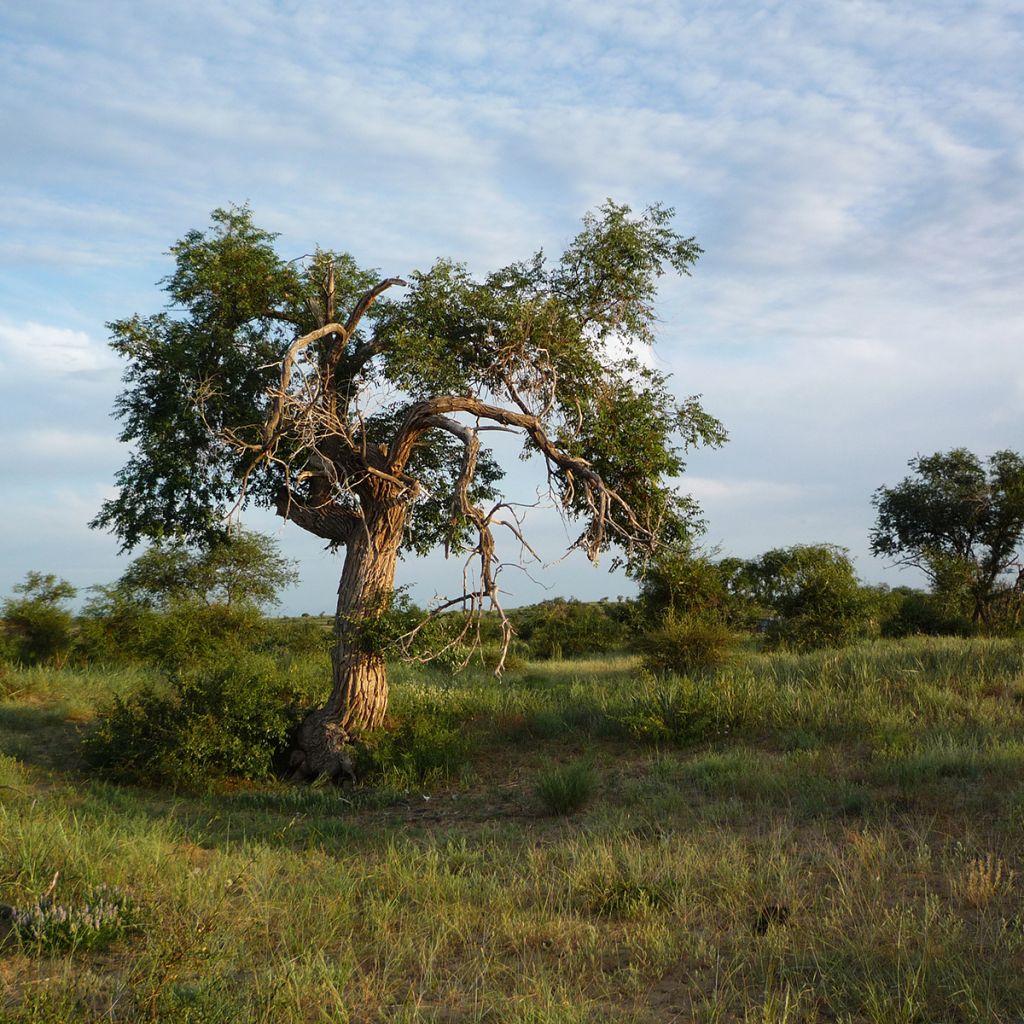

Ulmus pumila - Orme de Sibérie
Ulmus pumila - Elm
Ulmus pumila
Siberian Elm, Asiatic Elm, Dwarf Elm
Why not try an alternative variety in stock?
View all →This plant carries a 24 months recovery warranty
More information
We guarantee the quality of our plants for a full growing cycle, and will replace at our expense any plant that fails to recover under normal climatic and planting conditions.
Oversize package: home delivery by special carrier from €6.90 per order..
Express home delivery from €8.90.
Does this plant fit my garden?
Set up your Plantfit profile →
Description
Ulmus pumila, or Siberian Elm, is a deciduous tree with rapid growth commonly planted in cities. It is a good shade tree, with its slender trunk and rather erect and irregular vegetation, giving it a slightly disorderly appearance, which is very natural in aspect. Its small toothed leaves are light green in spring, darken in summer, and turn yellow in autumn before falling. Very hardy, it can withstand periods of drought. Of medium to large size, it is significantly taller than wide, making it suitable for medium-sized gardens. Rather resistant to Dutch elm disease, it can occasionally be attacked by insects. It can tolerate ordinary, neutral to calcareous, moist but well-drained soil.
Ulmus pumila belongs to the Ulmaceae family, like Southern Hackberry (Celtis) or Zelkova (false Siberian Elm), with which it should not be confused. It is native to Asia, from eastern Siberia to Korea, Mongolia and northern China. It was introduced to the United States in the early 20th century to combat wind erosion and has since naturalised there. In its native lands, it can reach a height of 25m (82ft), form a trunk with a diameter of 1m (3ft), and live up to 150 years.
Cultivated in temperate climates, Ulmus pumila rarely exceeds the age of 60 and a height of 15 to 20m (49 to 66ft). It has a more or less oval habit, with an irregular, slightly rounded or even slightly spreading crown, reaching a spread of about 8m (26ft). This makes it suitable for planting in large hedges, as its width is only half its height. It forms a bare trunk at the base, with upright, almost vertical, main branches. It branches out somewhat haphazardly. It is therefore advisable to prune it in the early years to shape it, while accepting its unruly appearance inherent in its genes, which gives it a natural silhouette. After all, it is a botanical species, not a horticultural variety! The grey bark is punctuated here and there with white patches; it is interesting, rather than decorative.
The leaves are slightly asymmetrical and small, ranging from 2 to 8cm (1 to 3in) long and 1.2 to 3.5cm (1in) wide, and the lamina has regular dentation. Carried by short petioles less than 1cm (1in) long, they are light green when they appear in spring and then darken, turning yellow in autumn before falling.
The flowers are petal-less and appear on the previous year's branches. Green in colour, they have no ornamental value and can be destroyed by frost when they form as early as February. Paradoxically, the tree itself is extremely hardy, tolerating temperatures as low as -35°C (-31°F). For this reason, it is highly appreciated in Canada, especially as it withstands the use of de-icing salt. The fruits are dry, brown samaras containing a central seed. They are produced abundantly.
This elm has many advantages and presents a number of drawbacks. It performs very well in urban conditions, resisting pollution and tolerating compacted and paved surfaces. Although it prefers moist and well-drained soil, it tolerates drought well and accepts poor soils. Growing in ordinary soils, it also tolerates very alkaline soils. Finally, it is generally resistant to Dutch elm disease, a disease that has devastated populations of this tree. However, the tree is susceptible to powdery mildew and canker, two fungal diseases, as well as a number of insects. It will only thrive in full sun, requiring a lot of light. Its wood is quite brittle and its crown tends to host dead branches over time.
Ulmus pumila will especially appeal to lovers of natural gardens, who are not attracted to sometimes overly sophisticated horticultural varieties. It will blend well with other plants in the same spirit, particularly in distinctly chalky soils. The male Cornelian Cherry (Cornus mas), a species that combines a beautiful early yellow flowering season, decorative red fruits, and interesting autumn colours, can be planted alongside it. In the same spirit, Amelanchier lamarckii will be a perfect companion, offering a magnificent white spring flowering, followed by edible dark fruits, which take on a sumptuous red colour in autumn.
Report an error about the product description
Plant habit
Flowering
Foliage
Botanical data
Ulmus
pumila
Ulmaceae
Siberian Elm, Asiatic Elm, Dwarf Elm
North Asia
Other Ulmus - Elm
Planting and care
Plant in autumn or spring in ordinary, well-drained soil. It will even tolerate limestone. While it grows faster in moist soil, it also adapts well to drier land. It does not appreciate clay soils soaked with water in winter. Plant it in a sunny location as it requires plenty of light. It adapts to all climates, tolerating drought as well as extreme cold. As it also withstands urban pollution and de-icing salt, it is well suited for city plantings. Water and mulch during the first summers. Prune in winter during the early years to balance its branches, and then to remove dead wood.
In the 70s, an epidemic of Dutch elm disease greatly reduced the population of elms in Europe. Following this event, a monitoring program was put in place. The disease is caused by a fungus transmitted by a beetle called a bark beetle. The first symptoms appear on a branch of the crown and are characterised by wilting and curling of the leaves during the growing season. This species of elm is the most resistant to Dutch elm disease, but it can still be attacked by other insects as well as diseases such as powdery mildew and canker.
Planting period
Intended location
Care
This item has not been reviewed yet - be the first to leave a review about it.
Haven't found what you were looking for?
Hardiness is the lowest winter temperature a plant can endure without suffering serious damage or even dying. However, hardiness is affected by location (a sheltered area, such as a patio), protection (winter cover) and soil type (hardiness is improved by well-drained soil).

Photo Sharing Terms & Conditions
In order to encourage gardeners to interact and share their experiences, Promesse de fleurs offers various media enabling content to be uploaded onto its Site - in particular via the ‘Photo sharing’ module.
The User agrees to refrain from:
- Posting any content that is illegal, prejudicial, insulting, racist, inciteful to hatred, revisionist, contrary to public decency, that infringes on privacy or on the privacy rights of third parties, in particular the publicity rights of persons and goods, intellectual property rights, or the right to privacy.
- Submitting content on behalf of a third party;
- Impersonate the identity of a third party and/or publish any personal information about a third party;
In general, the User undertakes to refrain from any unethical behaviour.
All Content (in particular text, comments, files, images, photos, videos, creative works, etc.), which may be subject to property or intellectual property rights, image or other private rights, shall remain the property of the User, subject to the limited rights granted by the terms of the licence granted by Promesse de fleurs as stated below. Users are at liberty to publish or not to publish such Content on the Site, notably via the ‘Photo Sharing’ facility, and accept that this Content shall be made public and freely accessible, notably on the Internet.
Users further acknowledge, undertake to have ,and guarantee that they hold all necessary rights and permissions to publish such material on the Site, in particular with regard to the legislation in force pertaining to any privacy, property, intellectual property, image, or contractual rights, or rights of any other nature. By publishing such Content on the Site, Users acknowledge accepting full liability as publishers of the Content within the meaning of the law, and grant Promesse de fleurs, free of charge, an inclusive, worldwide licence for the said Content for the entire duration of its publication, including all reproduction, representation, up/downloading, displaying, performing, transmission, and storage rights.
Users also grant permission for their name to be linked to the Content and accept that this link may not always be made available.
By engaging in posting material, Users consent to their Content becoming automatically accessible on the Internet, in particular on other sites and/or blogs and/or web pages of the Promesse de fleurs site, including in particular social pages and the Promesse de fleurs catalogue.
Users may secure the removal of entrusted content free of charge by issuing a simple request via our contact form.
The flowering period indicated on our website applies to countries and regions located in USDA zone 8 (France, the United Kingdom, Ireland, the Netherlands, etc.)
It will vary according to where you live:
- In zones 9 to 10 (Italy, Spain, Greece, etc.), flowering will occur about 2 to 4 weeks earlier.
- In zones 6 to 7 (Germany, Poland, Slovenia, and lower mountainous regions), flowering will be delayed by 2 to 3 weeks.
- In zone 5 (Central Europe, Scandinavia), blooming will be delayed by 3 to 5 weeks.
In temperate climates, pruning of spring-flowering shrubs (forsythia, spireas, etc.) should be done just after flowering.
Pruning of summer-flowering shrubs (Indian Lilac, Perovskia, etc.) can be done in winter or spring.
In cold regions as well as with frost-sensitive plants, avoid pruning too early when severe frosts may still occur.
The planting period indicated on our website applies to countries and regions located in USDA zone 8 (France, United Kingdom, Ireland, Netherlands).
It will vary according to where you live:
- In Mediterranean zones (Marseille, Madrid, Milan, etc.), autumn and winter are the best planting periods.
- In continental zones (Strasbourg, Munich, Vienna, etc.), delay planting by 2 to 3 weeks in spring and bring it forward by 2 to 4 weeks in autumn.
- In mountainous regions (the Alps, Pyrenees, Carpathians, etc.), it is best to plant in late spring (May-June) or late summer (August-September).
The harvesting period indicated on our website applies to countries and regions in USDA zone 8 (France, England, Ireland, the Netherlands).
In colder areas (Scandinavia, Poland, Austria...) fruit and vegetable harvests are likely to be delayed by 3-4 weeks.
In warmer areas (Italy, Spain, Greece, etc.), harvesting will probably take place earlier, depending on weather conditions.
The sowing periods indicated on our website apply to countries and regions within USDA Zone 8 (France, UK, Ireland, Netherlands).
In colder areas (Scandinavia, Poland, Austria...), delay any outdoor sowing by 3-4 weeks, or sow under glass.
In warmer climes (Italy, Spain, Greece, etc.), bring outdoor sowing forward by a few weeks.

































